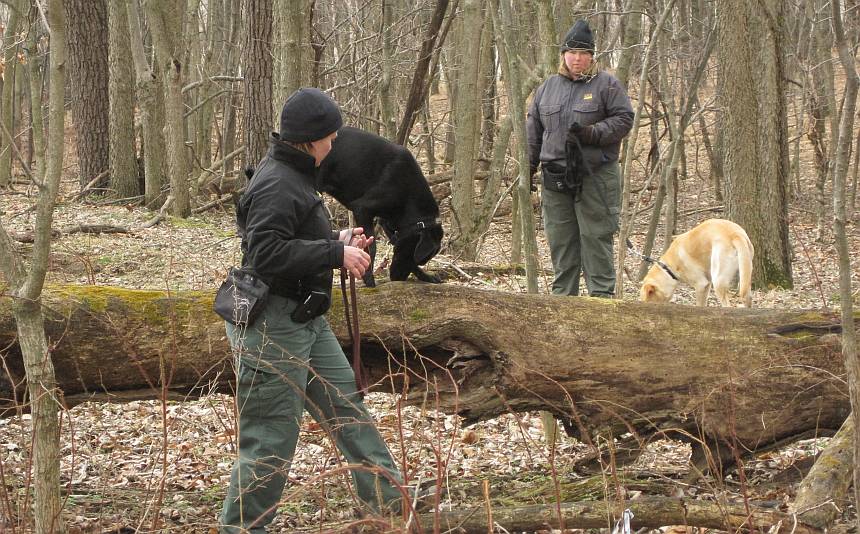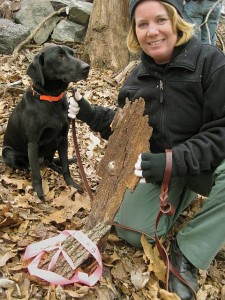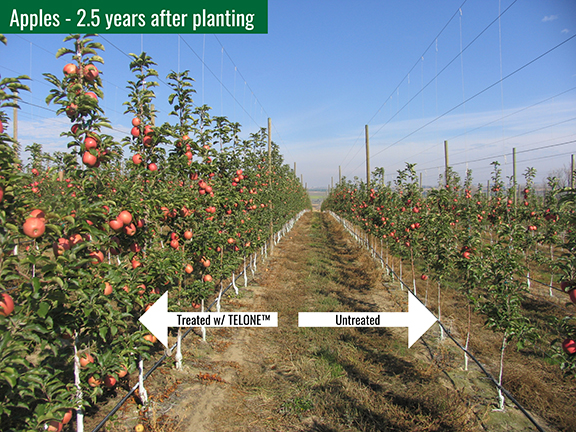USDA Uses Man’s Best Friend To Track Stink Bug

A detector dog team of Opal and Tig, with the help of USDA-APHIS training specialist Jennifer Anderson, search for brown marmorated stink bugs in a wooded landscape. (Photo credit: Doo-Hyung Lee, ARS)

USDA-APHIS training specialist Jennifer Anderson and detector dog Opal successfully found overwintering stink bugs in a dead, standing tree in a wooded area. (Photo credit: Doo-Hyung Lee, ARS)
Dogs, with their keen scent detection, have been used to screen luggage for contraband at airports, find missing people, and even sniff out pathogens in fresh produce on farms in cases of food safety concerns.
Now they’re helping researchers locate overwintering sites of brown marmorated stink bugs.
Tracy Leskey, the lead entomologist with the USDA’s Agriculture Research Service, has been tracking the spread of this pesky pest. Leskey’s scouting team has been all-hands-on-deck at the Appalachian Fruit Research Station in Kearneysville, WV, during the “Great Stink Bug Count.” Lately, though, her team has been all-hands — and-paws on deck with the addition of two detector dogs — Opal and Tig.
The two shelter-rescued Labrador retrievers are from the National Detector Dog Training Center in Georgia, according to their “detective” profiles on StopBMSB.com.
Tig and Opal worked with USDA-Animal Plant Health and Inspection Service training specialists Jennifer Anderson and Jodi Daughtery to learn how to detect the scent of BMSB in overwintering sites. The pair first learned how to track bugs in cardboard boxes indoors. Then, they tracked BMSB in bark attached to living trees. According to ARS, Opal and Tig were able to detect the presence of stink bugs with greater than 85% accuracy. StopBMSB.com gives them a 95% accuracy rating in the lab.

Tig, a rescued Labrador retriever and USDA-APHIS detector dog, helps researchers track the overwintering sites of brown marmorated stink bugs. (Photo credit: Doo-Hyung Lee, ARS)
The dogs can also detect invasive snails and made their BMSB tracking debut with the 2013 and have tracked the presence of BMSB along the Appalachian Trail in Maryland.
“Knowing where brown marmorated stink bugs overwinter is essential to future sustainable mitigation strategies, including integrated pest management programs,” Leskey says. “Field surveys of highly dispersed and concealed overwintering stink bugs can be facilitated by the use of detector dogs. Such use should improve the accuracy and efficacy of sampling efforts.”
The full recap of this research was published in the March Issue of Agriculture Research and can be found online.










